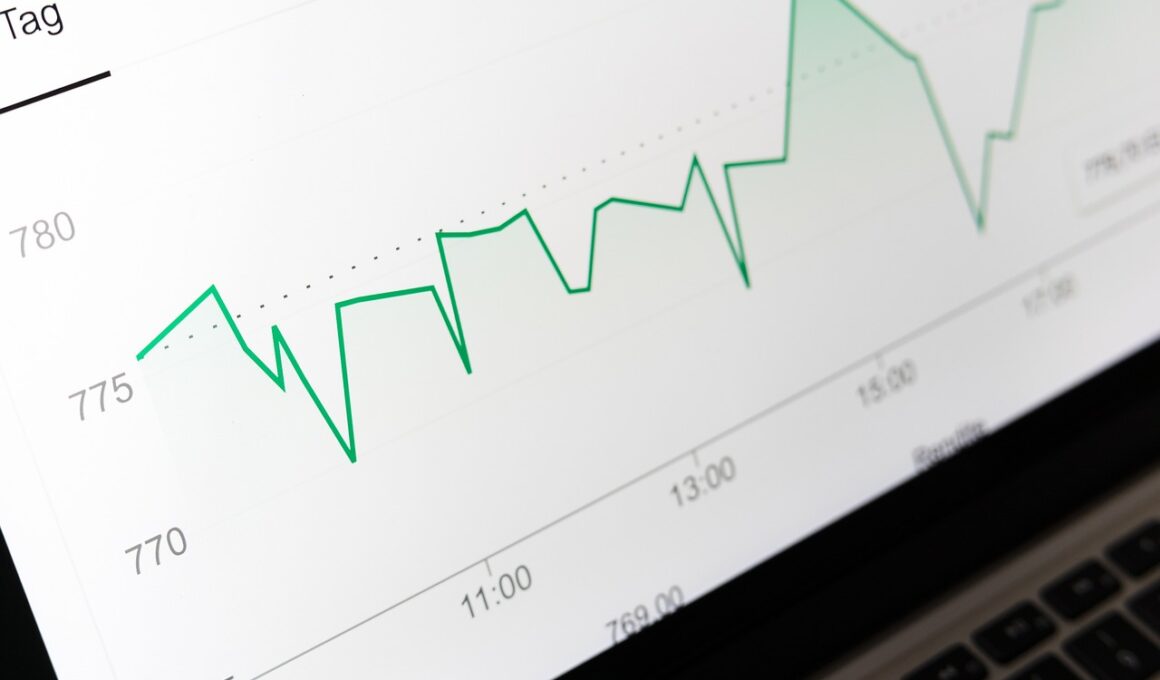Understanding Producer Price Index
The Producer Price Index (PPI) is a critical economic indicator that measures the average change over time in the selling prices received by domestic producers for their output. For small businesses, interpreting PPI reports can offer key insights into market trends and cost pressures that may affect their operations. Businesses must recognize that the PPI covers various industries, including agriculture, manufacturing, and services, making it a versatile tool for evaluating pricing trends. This index helps entrepreneurs gauge inflation’s impact on their cost structures, ultimately guiding pricing strategies. By examining the movements in specific sectors outlined within the PPI, business owners can anticipate changes that may influence input costs. Moreover, understanding these trends can facilitate better budgeting and financial planning. An increase in PPI may indicate rising materials costs, thus affecting profit margins. Conversely, if the PPI remains stable, businesses may find opportunities for expanding their operations without incurring higher costs. Monitoring this index regularly allows small business owners to stay informed and responsive to changing market dynamics.
Factors Influencing PPI
Small businesses must also consider the factors influencing the Producer Price Index when analyzing reports. Various elements contribute to changes in PPI, including supply chain disruptions, raw material shortages, and shifts in demand. For instance, unexpected natural disasters often impact agricultural production, leading to significant fluctuations in prices. Furthermore, geopolitical tensions can disrupt trade routes, thus altering the cost of imports and affecting overall prices. Another essential factor to monitor is consumer demand. A significant uptick in consumer spending can lead to higher production costs, as suppliers struggle to meet increased demand. Additionally, changes in labor costs and energy prices play a vital role in determining PPI readings. Business owners should stay abreast of these external economic indicators to understand their potential impact on pricing strategies. Having an in-depth understanding of the broader economic environment enables small businesses to adapt more effectively when faced with price changes. Therefore, these factors surrounding PPI are integral to strategic decision-making. They underscore the importance of continuously engaging with economic news and analysis.
Using PPI Data for Strategic Planning
Utilizing PPI data effectively can enhance small businesses’ strategic planning efforts. For example, by analyzing historical PPI trends, business owners can identify patterns that may provide insights into future pricing behavior. This understanding enables them to anticipate potential cost increases, thus adjusting their pricing strategies proactively. Moreover, adapting product offerings in response to PPI data allows entrepreneurs to optimize their supply chain processes. If specific raw materials are projected to rise in price, a small business may seek alternative suppliers or modify their product formulations to mitigate potential losses. This flexibility in planning can also extend to financial forecasting. By incorporating PPI data into budget assessments, small businesses can allocate resources more effectively and anticipate cash flow requirements aligned with price changes. Additionally, collaborating with financial advisors who understand PPI can provide small business owners with tailored strategies to navigate inflationary periods safely. By actively engaging with PPI information, businesses position themselves to respond dynamically as market conditions evolve. This proactive approach can safeguard their profitability and sustain growth.
Another crucial aspect of interpreting PPI reports is understanding the different categories within the index. Each category represents specific industries or sectors, such as food, energy, and manufactured goods. This segmentation allows small business owners to focus on particular areas relevant to their operations. For instance, a food manufacturer may primarily concern itself with food-specific PPI changes, while a construction firm may focus on materials and labor. Each of these sectors can experience price changes differently, influencing overall business costs. Furthermore, pay attention to core PPI, which excludes volatile items like food and energy. Analyzing core PPI can offer a clearer indication of underlying inflation trends affecting business operations over time. This differentiation helps small businesses make informed pricing and procurement decisions. Additionally, understanding sector-specific trends can allow businesses to identify opportunities for expansion or risk assessment. Being cognizant of sector changes enhances overall strategic awareness and helps build resilience against fluctuating market conditions. This knowledge supports effective competitiveness in the respective markets.
When small businesses receive PPI reports, they should also consider the potential implications on consumer behavior. Rising producer prices often lead to increased retail prices, which can affect consumer spending and behavior. This causal relationship is vital to understand for any business aiming to maintain profitability. If consumers face higher prices, they may reduce expenditures on non-essential goods, adversely affecting sales volumes. Consequently, businesses must prepare to adjust their marketing strategies based on PPI trends. Businesses may want to emphasize value propositions and highlight quality to mitigate the adverse impact of rising prices. Understanding how consumers react to changes in prices can inform inventory management and promotional strategies, ensuring that businesses remain competitive even in inflationary environments. Furthermore, businesses might explore offering discounts or incentive programs to attract price-sensitive customers during periods of high inflation. Being preemptive in customer engagement can significantly aid small businesses in navigating challenging economic scenarios. Overall, comprehending the interplay between PPI and consumer behavior is critical for sustaining market position.
Furthermore, leveraging technology to track PPI data can significantly benefit small businesses. Many online platforms and economic data services provide access to real-time PPI reports, making it simpler for businesses to stay updated. Utilizing these technological tools can augment decision-making processes, helping businesses analyze trends and implement changes accordingly. Furthermore, modern accounting software often integrates economic data, including PPI information, allowing for seamless financial forecasting. Integrating PPI metrics into accounting practices enables businesses to make data-driven decisions, enhancing overall efficiency. In addition to this, small businesses could consider training staff to interpret PPI data, fostering an environment where information is actively shared and utilized. This proactive engagement with economic indicators can cultivate a culture of insights within an organization, ultimately leading to better business outcomes. Additionally, embracing networking opportunities with industry peers can enhance understanding of how PPI influences competitive pricing strategies. By staying connected with industry trends and technological advancements, small businesses position themselves for future success and strong market presence.
Conclusion on PPI Insights
In conclusion, the Producer Price Index serves as a vital tool for small businesses seeking to navigate the complexities of economic trends affecting their operations. Gaining insights into PPI trends empowers entrepreneurs to make informed decisions regarding pricing, budgeting, and strategic growth. By understanding the underlying factors influencing PPI changes, small business owners can enhance their adaptability in the face of fluctuations in costs. Moreover, actively utilizing PPI data helps small businesses remain competitive in a dynamic market environment, essential for long-term success. Embracing technology and fostering a culture of data-driven decision-making will further strengthen their positions. Through continuous engagement with economic indicators such as the PPI, small businesses can better anticipate changes in consumer behavior, adjust their strategies accordingly, and optimize operational efficiency. As they develop a deeper understanding of the interactions between PPI and market dynamics, entrepreneurs can confidently lead their businesses toward sustainable growth. Ultimately, the insights gleaned from PPI reports can shape the future trajectory of small businesses amidst economic uncertainties.
The Producer Price Index (PPI) is a critical economic indicator that measures the average change over time in the selling prices received by domestic producers for their output. For small businesses, interpreting PPI reports can offer key insights into market trends and cost pressures that may affect their operations. Businesses must recognize that the PPI covers various industries, including agriculture, manufacturing, and services, making it a versatile tool for evaluating pricing trends. This index helps entrepreneurs gauge inflation’s impact on their cost structures, ultimately guiding pricing strategies. By examining the movements in specific sectors outlined within the PPI, business owners can anticipate changes that may influence input costs. Moreover, understanding these trends can facilitate better budgeting and financial planning. An increase in PPI may indicate rising materials costs, thus affecting profit margins. Conversely, if the PPI remains stable, businesses may find opportunities for expanding their operations without incurring higher costs. Monitoring this index regularly allows small business owners to stay informed and responsive to changing market dynamics.


